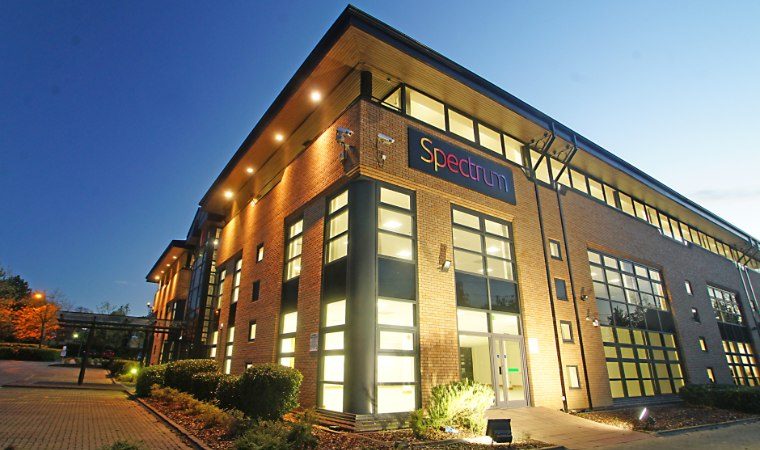Buy Commercial Property The Smart Way: Your Guide To Syndicates

Reaping The Rewards of the ‘Third Way’
“If you are faced with two alternatives, you should always look for the third.” This quote is attributed to Edward de Bono (1933-2021), who is credited with inventing the term ‘lateral thinking’.
And while he probably didn’t have commercial property in mind, he may as well have done – because the ‘third way’ of investing pays serious dividends. We should know…it has helped our investors to benefit handsomely over the last 20 years.
But to fully understand the benefits of syndicates, one should first examine the other two main ways of investing:
– buying commercial property outright as a single investor
– investing in commercial property funds.
Buying Commercial Property Outright
This is the most straightforward way to buy commercial property as a single investor. It provides full ownership and control over the asset – so you alone make decisions on lettings, management and the eventual sale.
The main advantage is that you capture all the income and capital appreciation directly, without sharing the returns with others. You also have the flexibility to tailor the investment to your risk tolerance and long-term objectives.
However, this route requires significant capital – typically well into the millions for prime office, retail or industrial units. This is an immediate barrier to entry for many investors. It also concentrates risk in a single asset – meaning that any voids or tenant failures can severely impact returns.
Furthermore, managing a commercial property involves dealing with tenants, compliance obligations and property management – all of which can be time-consuming unless outsourced to professional managers at additional cost.
Investing In Commercial Property Funds
Investing in a commercial property fund is a popular alternative to buying a property outright. Funds pool money from multiple investors to acquire and manage a diversified portfolio of commercial properties. This can include factories, offices, warehouses, retail parks and even specialist sectors such as healthcare or student accommodation.
A key advantage is diversification – both geographically and across sectors. This reduces the impact of any single property underperforming. Funds also offer greater liquidity, particularly when they allow investors to buy and sell units more easily than disposing of an entire building.
Funds are managed professionally, removing the burden of dealing with issues hands-on. But there are downsides, notably the fact that the investors have virtually no control – other than taking their money elsewhere. And the speed and ease of that depends on the structure of the fund and the liquidity of the underlying assets.
Investors have no say whatsoever in which properties are bought or sold. Returns are also diluted by significant management fees. And in periods of market stress, some funds may impose withdrawal restrictions – as seen during past downturns.
Why Commercial Property Syndicates Are A Smarter Way To Invest
A middle ground between these two extremes is joining a commercial property syndicate. Here, a small group of investors – often around a dozen – jointly buys a property. This allows individuals to access larger and potentially higher-quality assets than they could afford alone, without the scale of a fund.
Syndicates typically appoint a manager to handle property administration but investors still retain the day-to-day control and decision making, and so have more transparency and influence than they would in a large fund. The advantages include shared costs, access to prime properties, and potentially higher returns.
Craigard is one of those property managers that offer investors this syndication model . Our syndication structure has five main benefits:
1. It is tax transparent and relatively inexpensive to set up and administer.
2. Investors can pick and choose the investment opportunities they wish to participate in or that suit their risk profile.
3. There is no personal liability for participating investors.
4. The structure can accommodate SSAS, SIPP, individual or corporate investors.
5. There is a direct property interest for each syndicate investor.
The aim is ‘value add’ – acquiring properties with improvement potential and adding value over two to four years. There are plenty of opportunities for this, given the market’s strong appetite for prime location properties with attractive ESG credentials.
Furthermore, it is important to note that Craigard always co-invests – ensuring that our interests are always aligned with those of our investors.
Craigard has a 20-year track record and a circa £85 million portfolio of around 20 assets under management. We have raised £100 million in private equity and exited 28 syndicates.
Investment Opportunities and Further Information
Using our extensive agency network across the country, we’re constantly on the lookout for new investment opportunities – typically £2 million to £7.5 million – in the business space sector. We identify attractive opportunities that allow us to leverage our expertise and drive value.
We target the sectors where we feel the value is at any given time, rather than concentrating on one particular asset class or location. This opportunistic approach is another key benefit of the syndicate model.
Our focus is on maximising outcomes – not chasing volume – so we buy quality over quantity. We undertake thorough due diligence along the way to ensure peace of mind for all involved.
Ultimately, we’re putting our own money on the line alongside that of our co-investors. We want to ensure that all our investments have the best chance of success and that everyone’s interests are aligned. The aim is a long-lasting partnership that benefits all involved.
For further information on commercial property syndicate opportunities, please view our current projects and contact us.



